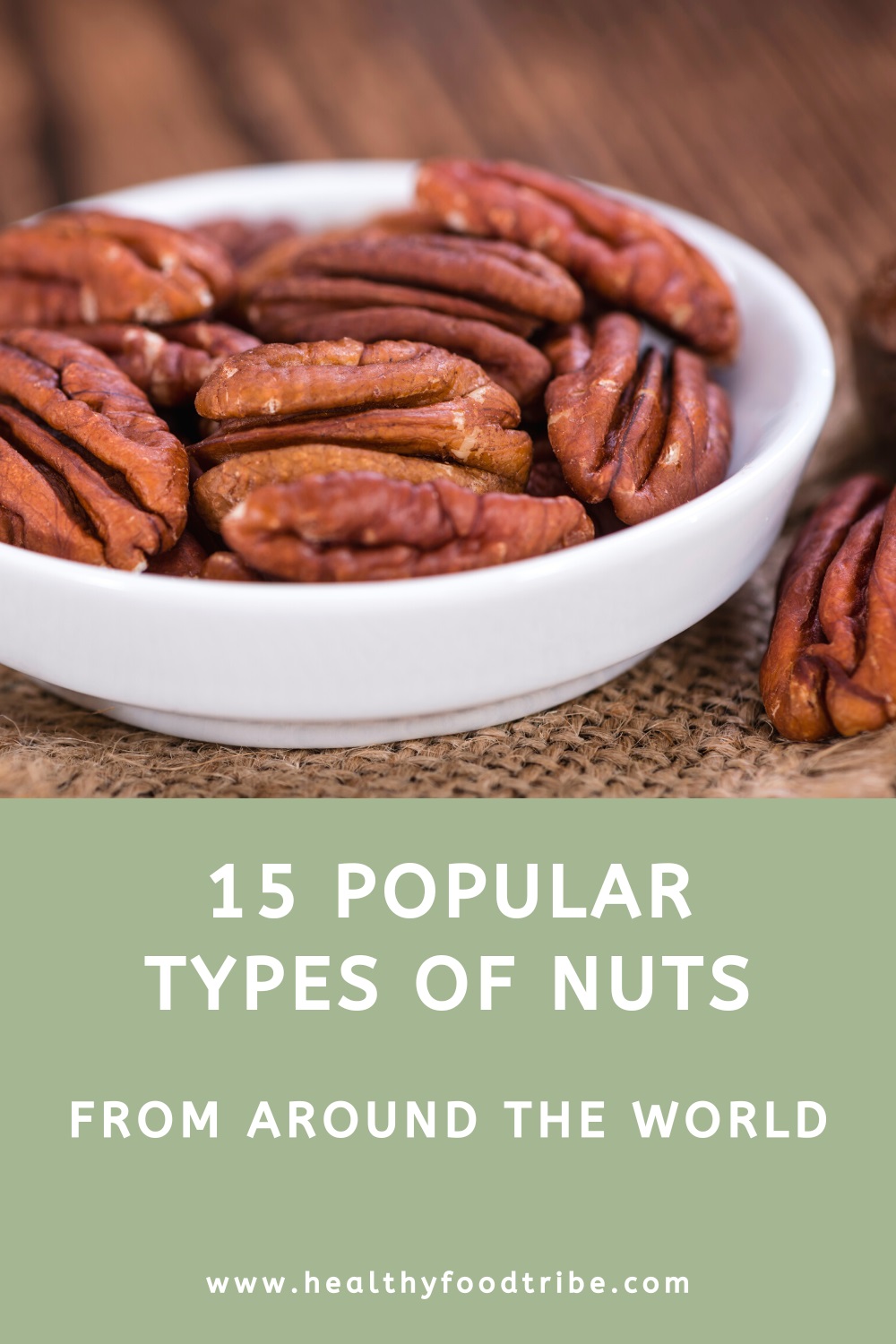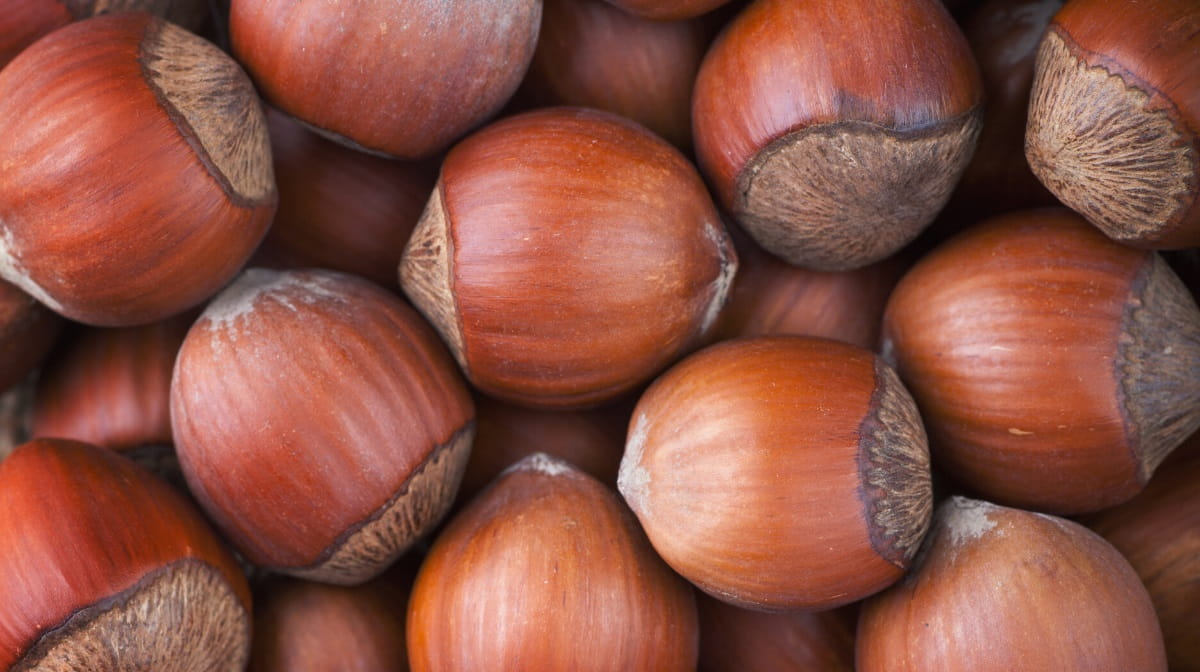Last updated: April 8, 2024
Ever wondered which nuts reign supreme in the snack world? This article lists 15 of the most popular types of nuts from around the world with pictures.
Nuts are a key part of many cuisines from around the world. Not only are they a rich source of nutrients, but they also offer a diverse range of flavors and textures.
Whether you’re a culinary enthusiast looking to expand your ingredient repertoire or a food lover interested in learning more about these versatile food items, this guide will hopefully serve as a valuable resource for understanding the world of nuts.
In alphabetical order, here are 15 popular nut varieties that are worth trying, as there are many benefits in eating nuts regularly.
1. Almonds
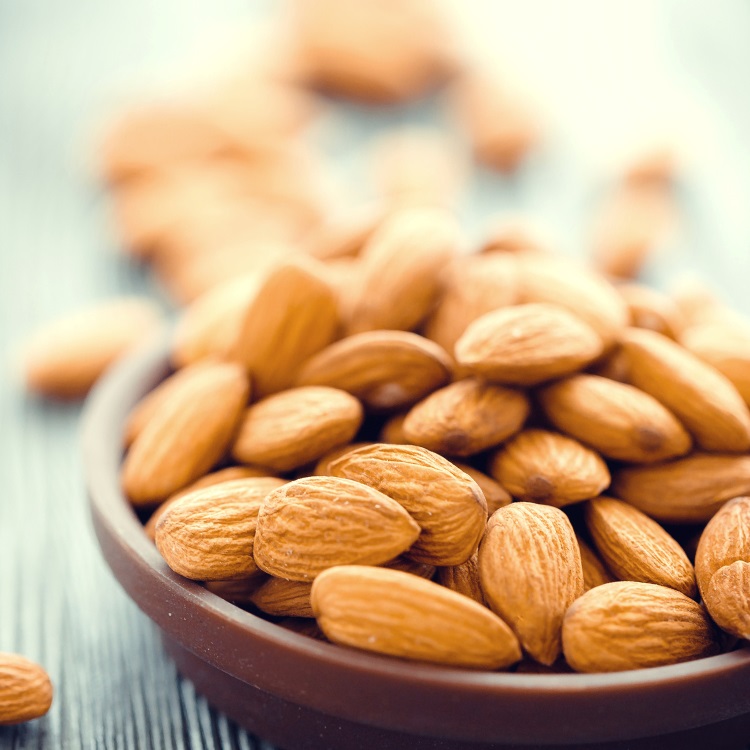
Almond trees are native to Southwestern Asia. The valuable nuts were transported by ancient peoples throughout the Mediterranean, eventually making it to Europe. Today, almonds are one of the most profitable crops in California.
Surprisingly, almonds are a close relative of the peach. This is evident when you look at an almond still in its shell, which very much resembles a peach pit. The edible part of the nut is oval-shaped with a pointed end and thin, reddish-brown paper skin.
Almonds are packed with vitamin E, a natural preservative that helps almonds stay good in the fridge for up to two years. These popular nuts are also full of protein and contain more of this valuable macronutrient than any other nut.
Almonds make a delicious afternoon work snack all on their own. They can also be ground into flour, blended with water, and strained to create almond milk, or pulverized to make almond butter.
2. Brazil Nuts
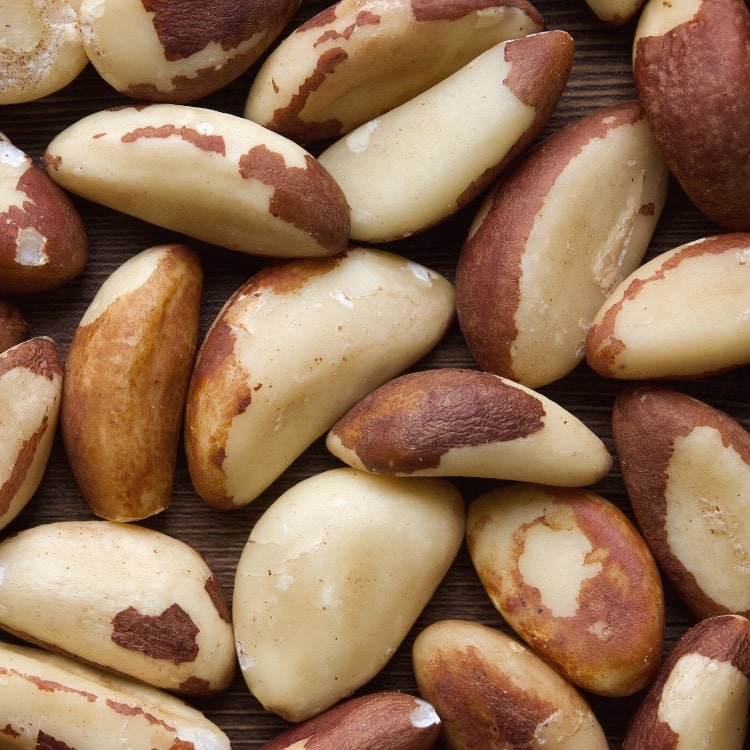
As the name suggests, Brazil Nuts hail from South America. The trees that bear the large fruits that contain the nuts are some of the longest-lived and largest trees in the Amazon rainforest. Most of these trees live for over 500 years.
Brazil nuts grow inside rough brown shells that resemble wrinkled leather and are shaped like a section of an orange. The nuts themselves are oblong and slightly curved with thin brown paper skin and cream-colored flesh. They have a uniquely mild flavor with a bitter finish. They are most prized for their texture, which is smooth yet crunchy.
Brazil nuts are one of the best natural sources of selenium, with one ounce supplying ten times your daily recommended intake. These nuts are also good sources of thiamine, magnesium, and phosphorus. Interestingly, they often contain radioactive elements, but that’s nothing to be alarmed about.
3. Candlenuts
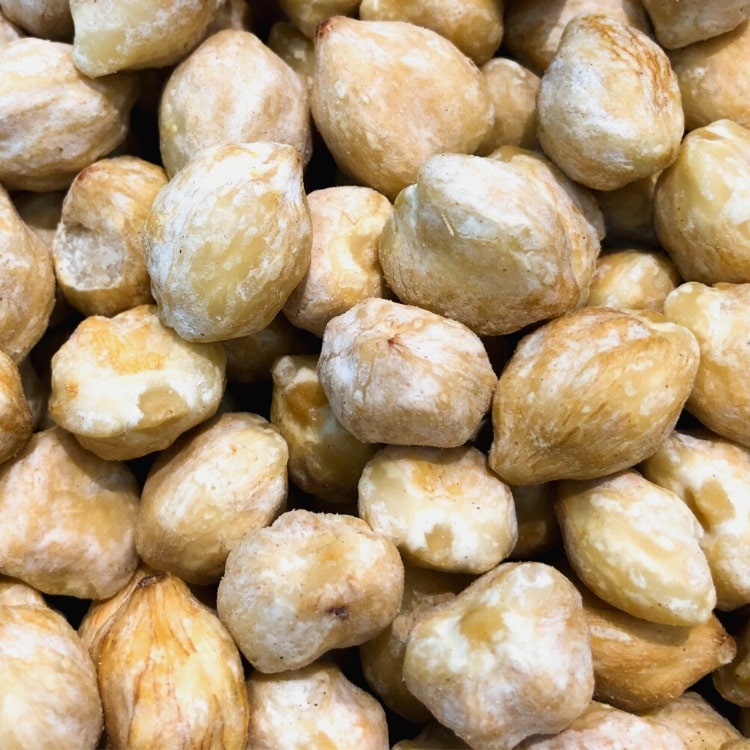
While not overly popular in mainland America, candlenuts are hugely important to many cultures around the world. These trees are native to Southeast Asia but have long been spread throughout the tropics by ancient travelers.
Kukui, the tree from which candlenuts are harvested, is the state tree of Hawaii. The nuts, which have a high oil content, were once used by natives on the islands as a light source. Today, they are still used to create inamona paste, an important ingredient in poke.
Throughout the tropics, candlenuts are harvested to be used as food, burning oil, and staining oil. The nuts grow in dark, smooth, round shells. The white nuts inside resemble large chickpeas.
These oily nuts are mildly toxic when raw and are typically cooked before consumption. They are often ground and used to thicken sauces.
4. Cashews
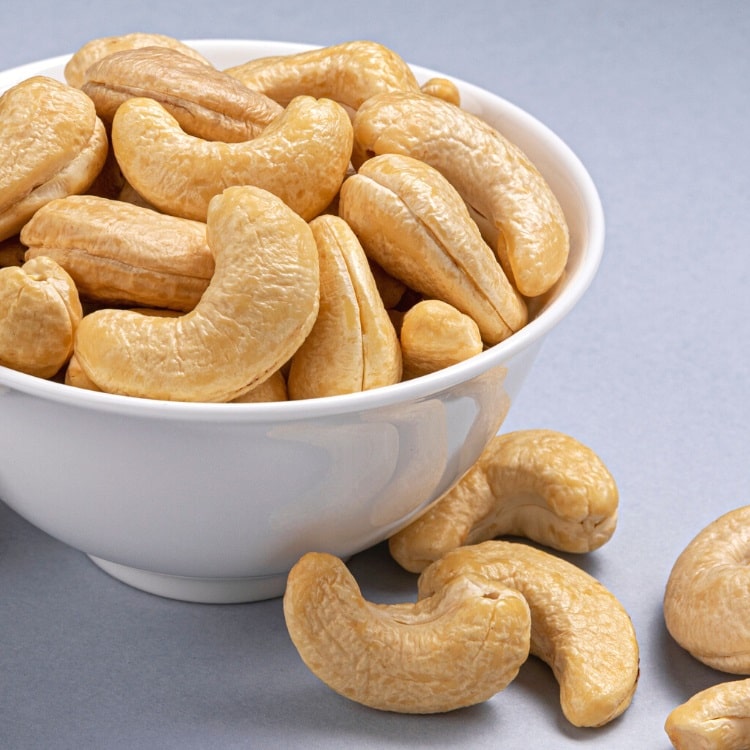
Cashew trees are native to South America and readily grow in tropical climates throughout the world. Uniquely, the cashew nut grows not inside a fruit, but on the end of a fruit.
The cashew apple looks somewhat like a puckered pear and features a single green-shelled cashew nut hanging off the blossom end of it. To remove the shell, the nut must be boiled and cooked to neutralize the skin-irritating toxins inside. The nut itself is curled into a C shape and does not feature the paper skin typical of most tree nuts.
Cashews make great snacks. They can also be used as toppings for savory dishes such as curry or Asian noodles. While rare compared to other nuts, cashew milk, yogurt, and butter are gaining popularity.
Interestingly, the small cashew nut is one of the best sources of zinc and copper in the nut world. Also worth mentioning is that the cashew apple is one of the most popular fruits in Brazil.
5. Chestnuts
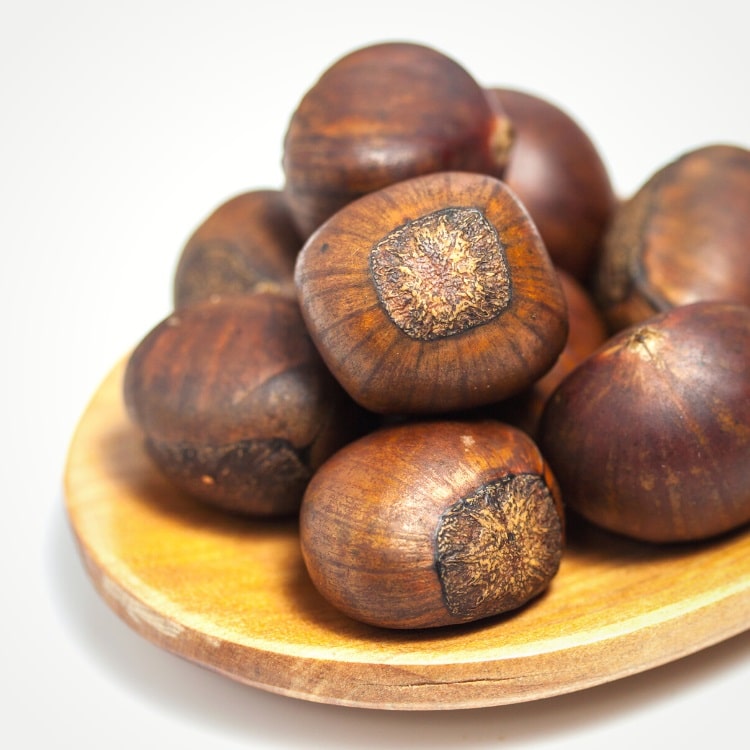
Chestnuts are native to temperate regions in the northern hemisphere. Before white settlers showed up in America with their own species of chestnut trees, native chestnuts covered as much as one-quarter of the Appalachian mountains.
The fruits of the chestnut tree look like round, hairy puffballs. Each contains numerous chestnuts. The shells are reddish-brown with cream-colored caps. Inside, the flesh of the nut is golden brown.
Unlike most nuts, chestnuts are fairly low in fat and protein. They are made predominantly of carbohydrates. They are bitter when raw but take on a sweet buttery flavor when cooked and taste somewhat like sweet potatoes.
6. Coconuts
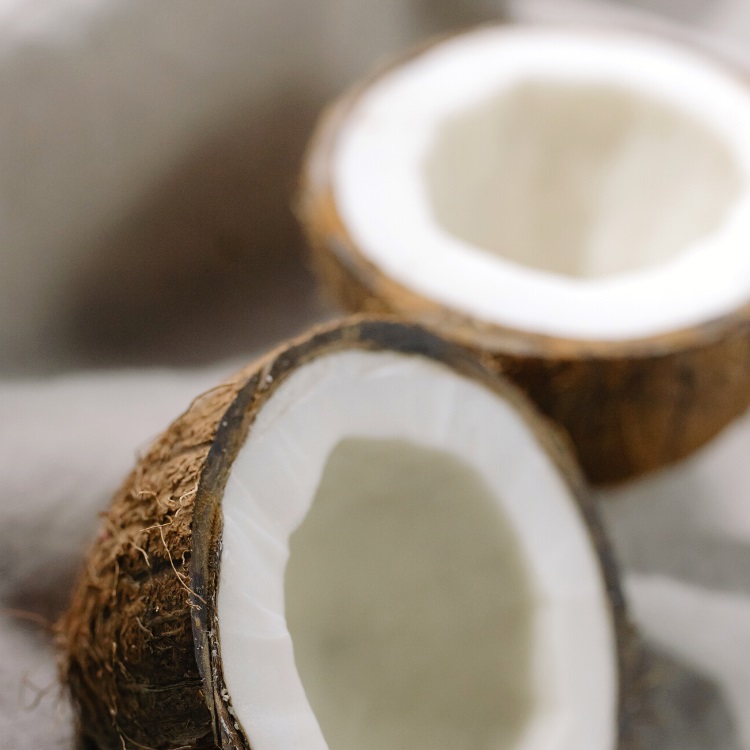
Technically speaking, a coconut is not a nut, but it’s pretty close. Like other nut-containing fruits, the coconut is considered a drupe, because the seed is enclosed in a hard outer shell. But true nuts do not split open on their own as the seedling emerges.
Whether you want to call it a seed, a fruit, or a nut, one thing is certain: coconuts are pretty popular. The flesh of the nut is dried to create a sweet treat or pulverized to make coconut milk. The water in the nut is also a popular beverage, and the oil is used widely in baking and industrial food production.
Coconuts grow only on a single species of tropical coconut palm, which are native to Polynesia. Ancient humans spread coconuts throughout the Pacific thousands of years ago.
7. Ginkgo Nuts
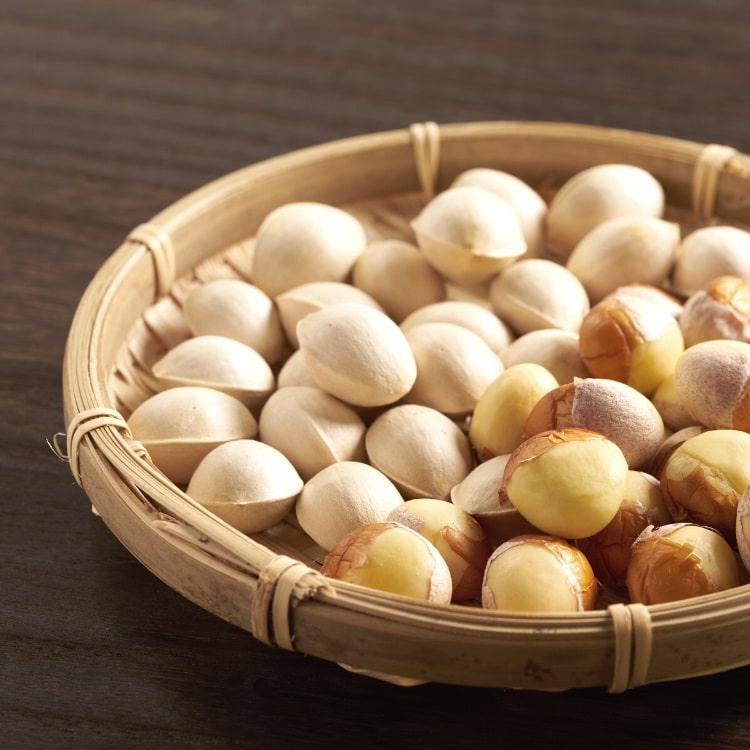
Ginkgo nuts are a much less popular product of the ginkgo tree than the leaves, which are used to make extracts and supplements. But these nuts are worth hunting down. They have a strange, gelatinous yet delicious green skin and an amazing umami flavor.
One reason these nuts are less popular than others is because the fruit they grow in smells like rotten cheese. Worse still, this fruit is toxic and contains a horrible skin irritant. Even the nut itself is toxic unless heated.
But the flavor of sauteed ginkgo nuts makes them worth braving stinky, poisonous fruit to get to. And, as a bonus, they are a good source of potassium, vitamin C, calcium, and phosphorus.
8. Hazelnuts
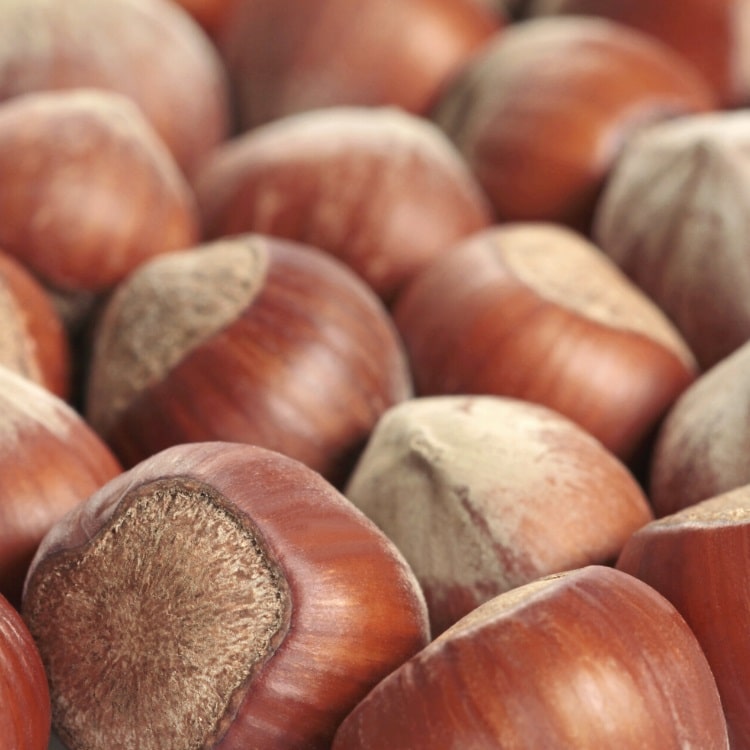
Hazelnuts are produced by the hazel tree. There are dozens of cultivars, each with a slightly different flavor, size, or use.
These small, round to oval nuts are also commonly known as filberts and cobnuts. Their shells are golden brown with a pale circle on the top. The nut inside is a creamy golden color that darkens nicely when roasted.
While hazelnuts can be eaten as a raw snack, they are most often used as a flavoring agent. They bring a wonderful sweetness and a hint of earthiness to baked goods, liqueur, coffee, and many chocolate products. Hazelnuts can also be roasted and turned into hazelnut butter.
These small but mighty nuts are packed with fiber, folate, and vitamin E. They are also rich in B vitamins and many minerals.
9. Kola Nuts
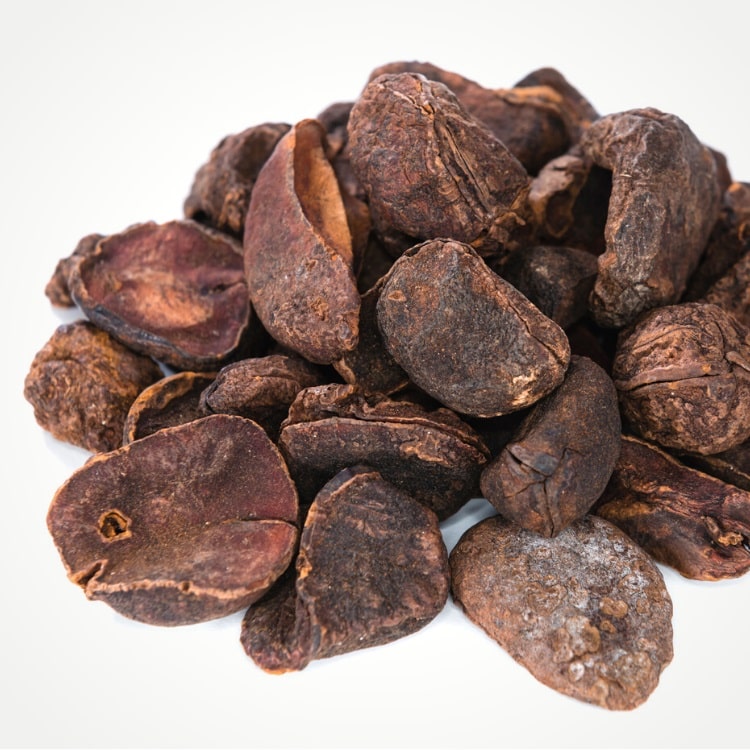
You may not be familiar with the kola nut, but I’ll bet you’re familiar with one of the most famous beverages made from it. That’s right, cola soda pop was originally made by extracting flavoring agents from this nut, which is native to Africa.
In their raw form, kola nuts are fairly bitter. But they take on a familiar caramelly sweetness as you chew them. They also naturally contain a decent amount of caffeine. But the flavor isn’t the only thing that sets these nuts apart. Many kola nut shells have a distinct purple-pink coloration. Inside that fantastic shell is an oblong, light brown nut.
Kola nuts are rarely eaten as a snack or used in cooking. But they are frequently used in Africa as a medicinal nut. They are also chewed to freshen breath and used during certain rituals.
10. Macadamia Nuts
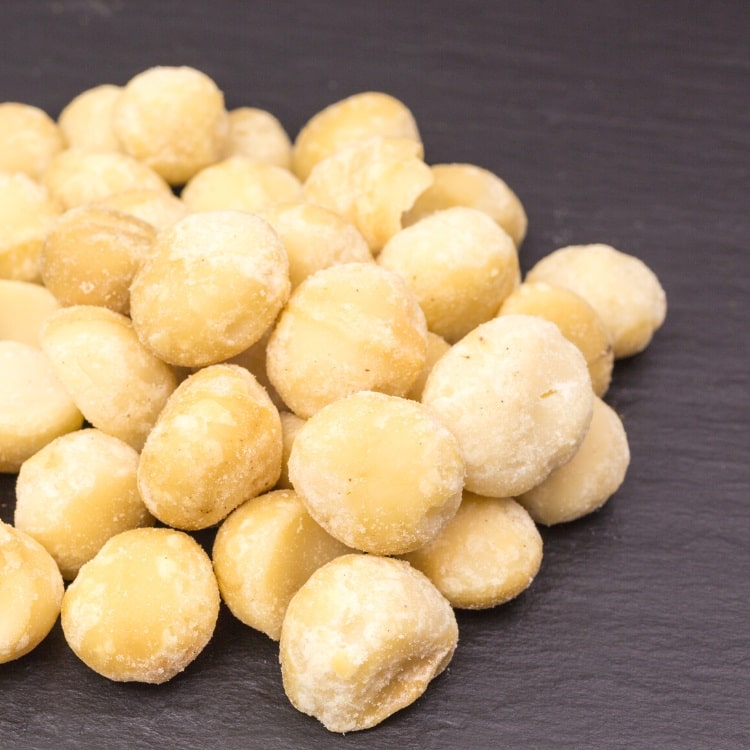
The macadamia tree is native to Australia and the buttery nuts from the tree have been used by Aboriginal people for thousands of years. It wasn’t until 1828 that the first Westerner stumbled upon macadamias.
Today, these small round nuts are still very popular in Australia but are now also grown in Hawaii, South Africa, Latin America, and Southeast Asia.
These nuts have the hardest shells of any nut. That shell is nearly perfectly round and brown in color. The similarly round flesh inside is a creamy tan.
Macadamia nuts have a rich, buttery texture and subtly sweet flavor that is made more apparent after roasting. They are often spiced and sold as snacks, used in baking, and included in some savory recipes.
11. Peanuts
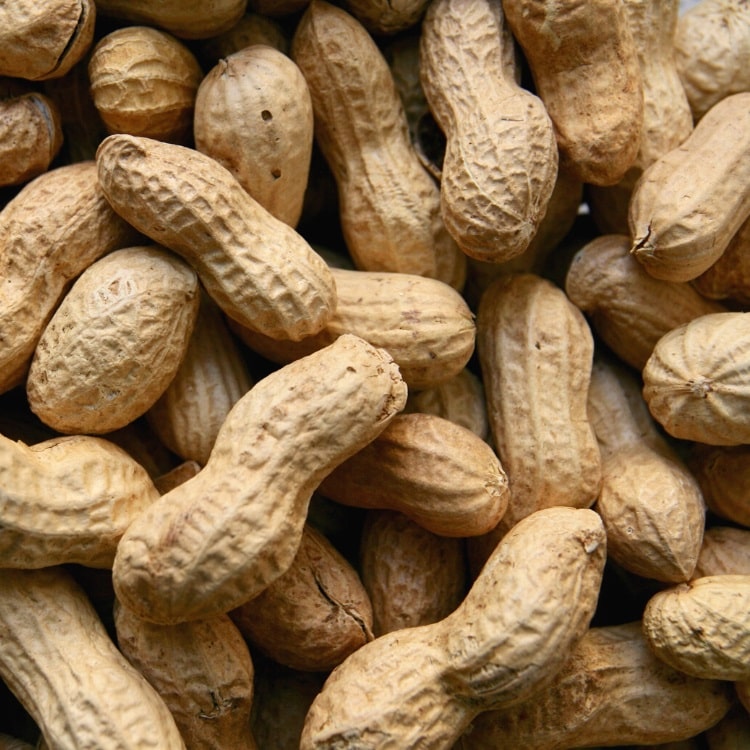
Despite the name, peanuts aren’t technically a nut. They don’t grow on trees, but rather on a groundcover plant in the legume family. Unique to legumes and nuts, peanuts develop underground from special “pegs” that grow from fertilized flowers.
These strange nuts are native to South America and appear to be a hybrid species between two wild-type peanuts. Once domesticated by native peoples, the peanut took on a much bushier look and developed much larger, edible pods.
In North America, peanuts started as a feed crop before being popularized for human consumption in the 1930s. This was 40 years after the invention of peanut butter, which would eventually become one of the most popular uses for peanuts.
Peanuts are often used in cooking and baking. They are a staple garnish in savory Asian dishes and a common flavoring agent in sweet treats. You will also find peanut products used in many household items.
12. Pecans
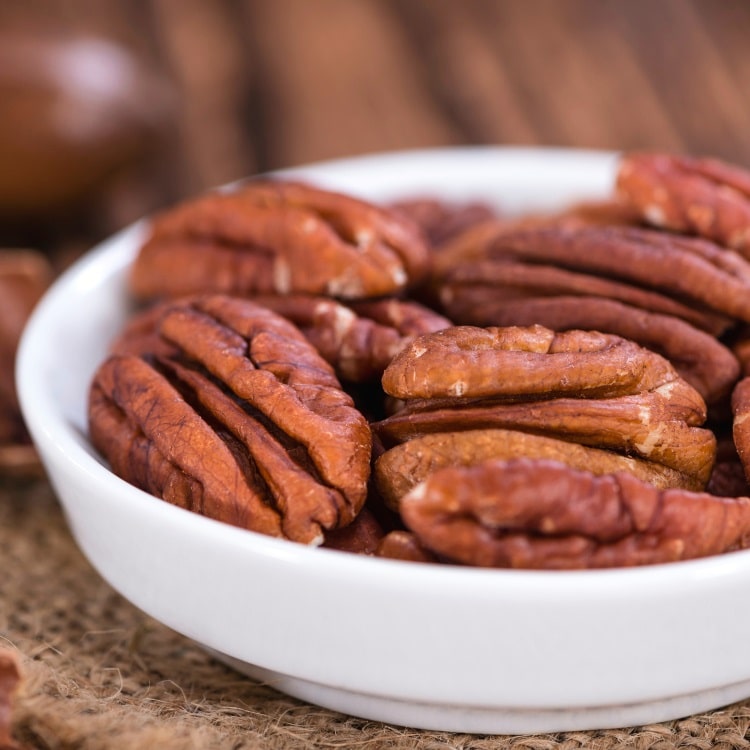
Pecans grow on a type of hickory tree native to the Southern US and parts of Mexico. Pecans are the state nut of Alabama, Arkansas, California, Louisiana, and Texas. Interestingly, despite growing here as long as people have been around, Americans can’t seem to agree on the correct way to pronounce this nut’s name.
The shell of the pecan is pale brown and oblong. Inside each shell are two wrinkled, golden-brown nuts. They may not be much to look at but the flavor of pecans, which is buttery, sweet, and slightly floral, makes them very popular.
These sweet nuts are most often used in dessert dishes, including the famous pecan pie. They can also be roasted, dressed in sugar and spices, and eaten as a decadent snack. You will often find pecans in ice cream, cookies, and baked goods.
13. Pine Nuts
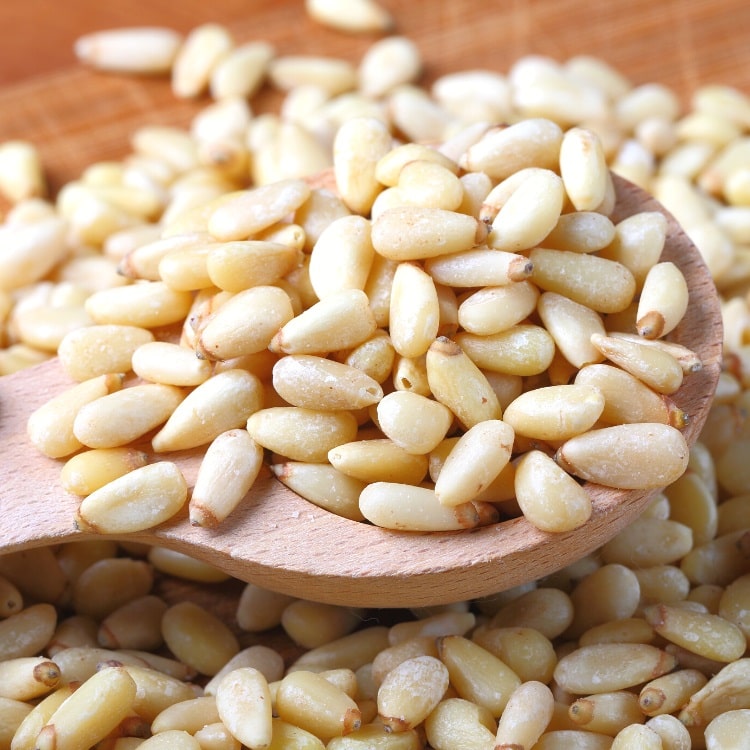
Pine nuts are the nut-like seeds produced by pine trees. Of all the pine tree species in the world, only 29 produce edible nuts. Of those, only 20 are large enough to bother harvesting for human consumption.
These delicate, white seeds grow in hard shells between the scales of pinecones. Harvesting them can be difficult and time-consuming. Throughout the world, careless harvesting of pine nuts has led to habitat and forest destruction.
In the US, a great deal of pine nut harvesting is done by Native tribes and Hispanic communities. In these cultures, pine nuts are used in a wide variety of dishes and can be made into flour. For most other American cuisine, pine nuts are used as a garnish or to add texture to salads or ground up to create pesto.
14. Pistachios
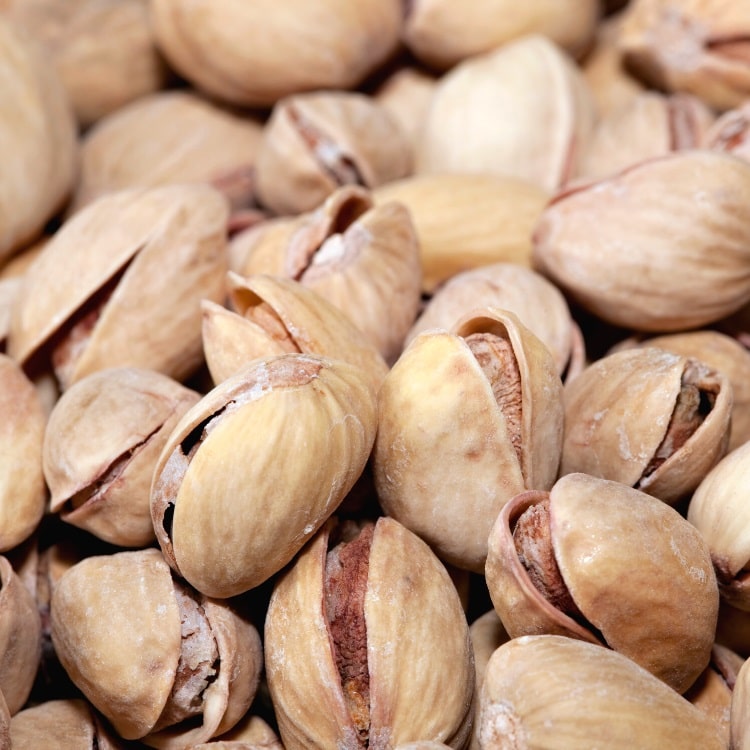
While they look nothing alike, pistachios are actually a close relative of cashews. These nut trees hail from Central Asia and the Middle East. After reaching maturity, a single tree can produce thousands of nuts each year and live up to 300 years.
Pistachios grow in thin white shells that split at maturity to reveal a single bright green nut with purple skin. These nuts have a mild flavor that is savory and slightly earthy with some sweet undertones.
They are usually eaten raw or roasted as a healthy snack. They can also be used as a textural addition to salads, ground up and added to sauces, or added to breads and baked goods.
The reason pistachios are so colorful is because they are loaded with antioxidants. These green nuts are also packed with protein and monounsaturated fats. All that nutrition might explain why our ancestors were chowing down on these nuts thousands of years ago.
15. Walnuts
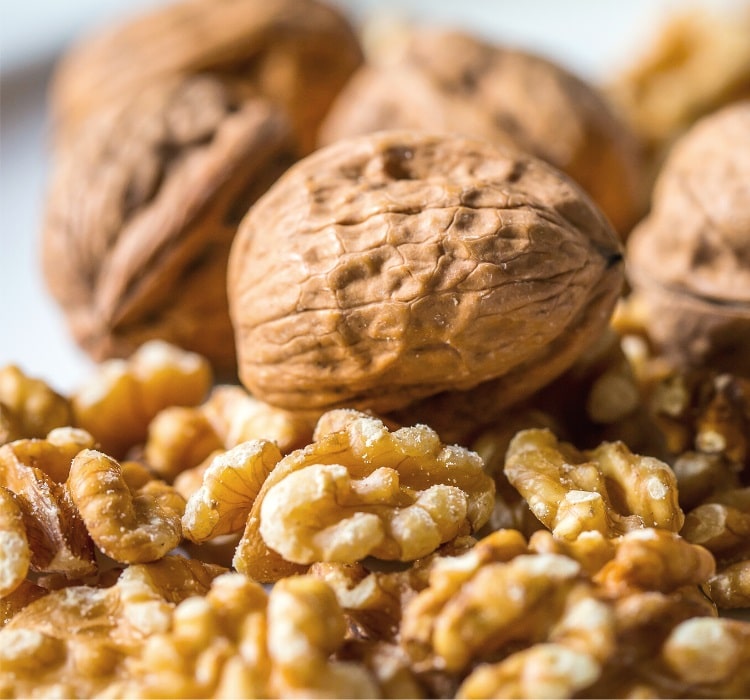
Walnut trees grow throughout the northern hemisphere. Those most commonly harvested for their edible nuts are the English walnut, the American black walnut, and the Japanese walnut.
These large nuts develop inside green, fleshy skin that dries and opens as the nut reaches maturity, revealing a hard golden pit. Inside the shell of that pit are two wrinkled walnuts. The flesh of these nuts is intensely earthy, very nutty, and slightly bitter.
Walnuts are most often eaten as a raw snack. They also make a great topper for both sweet and savory dishes, including oatmeal, pasta, soups, and salads. Walnuts are also used frequently in baking.
